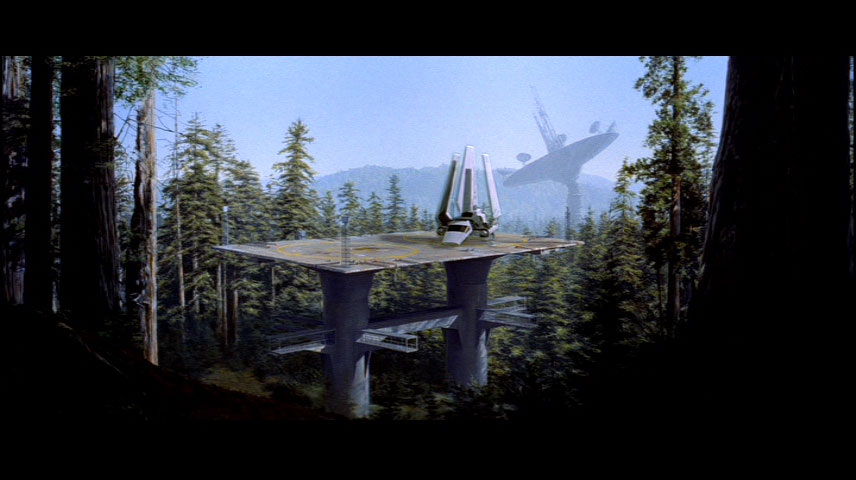Picard wrote:
Yes I know. But I don't remember seeing classic thrusters on Death Stars, so its propulsion system is most likely similar to Federation impulse drive, meaning that stress may not be nowhere as high as you claim.
Wait, so whatever happened to your assessment that the Death Star introduced no new technologies other than the superlaser? You're suddenly saying that they are using magic to move their ships, despite the fact that conventional starships use ion drives! What happened?
You adressed and failed. To quote:
StarWarsStarTrek wrote:The Death Star's hull would have to be made from a material 300,000 times stronger than structural steel just to accelerate at 1 km/s^2.
Nope, you went back too far chronologically. I already addressed your subsequent claim; that the melting of durasteel at Mustafar somehow indicates that durasteel's heat capacity is no higher than structural steel.
Besides, we know that ISD can get destroyed by asteroid impacts in low kiloton range, so mechanical strength isn't that great either;
Except that mechanical strength
has to be great, or all of the Empire's ships would turn to mush whenever they accelerated at the speeds they are observed to move at.
and Death Star seems to be based on gravity manipulation -
Which doesn't explain the acceleration issue in the slightest.
from "superlaser",
Which has nothing to do with gravity. I might say that Mon Montha calls it the "largerst superlaser ever built", implying that they aren't new technology, by any means.
to engines - so some form of inertialess drive and/or SIF is not that far fetched.
Too bad for you that the standard of evidence needed to break physics is not "not that far fetched".
As I said, only new thing is larger extent of gravity manipulation, which adresses mechanical strengths.
No, it doesn't. I was referring to the stresses of the Death Star accelerating itself, not the 10 m/s^2 of standard Earth gravity.
And you seem to think that gravity manipulation would be free energy; if you remove gravitational potential energy, that energy must be converted into another form, in order to keep with CoE. So anti-grav technology must require significant amounts of energy in Star Wars.
I am just saying that adjectives like "moon sized" don't show much, so you cans top using them.
Which doesn't explain why this was your
only response to the statement, rather than a nitpick, followed by an addressing of my actual argument.
As above, stop using "moon sized", because it is meaningless. We all here know how large Death Stars are.
"Incredibly" and "inconcievable" is also useless. It is large, so of course it would require large hyperdrive and large reactor. But that proves nothing concrete.
Absolutely nothing you've said proves anything concrete. You haven't presented
any math to support your point, in the slightest. You've only posted an irrelevant analogy that proved the
exact opposite of the point you were trying to make.
How many times they ran into stormtroopers?
A lot. Now who's the one saying nothing concrete?
Besides, Death Star is an instrument of terror, meant to scare systems into submission so that, hopefully, total military may be reduced in size.
Nothing in your own canon policy indicates this. Scaring systems into submission doesn't mean that they wished to reduce the size of the military. This is nothing more than vague speculation of your part, against hard, cold mathematics and physics.
What I am saying is that you should stop throwing around vague quotes.
And "how many times they ran into stormtroopers?" isn't vague now?
And I don't believe for a moment that it wasn't a stalling tactic. If it weren't, why didn't you also address the
actual argument as well?
DSI is 120 kilometers. DSII is 160 kilometers. Federation Stardocks are between 4 and 12 kilometers, but there are large numbers of these.
Yes, Empire could easily outbuild Federation. But by what margin?
By an enormous margin. Comparing the Death Star to the entire starfleet, by your own math, gives the Empire the edge by at least
nine orders of magnitude. Federation stardocks are immobile; they don't need to worry about the stresses of acceleration, and are therefore significantly easier to construct pound for pound.
According to your canon policy, Han Solo comforts Luke in RotJ by pointing out that the Executor isn't special, and that Vader is not necessarily in it; "there are plenty of command ships." Ergo, 11 kilometer long super star destroyers, FTL capable and built to commit to extreme acceleration feats (Battle of Endor), are commonly used as command ships in the Empire. Meanwhile, the Federation has never constructed mobile battleships larger than a few hundred meters in length.
1) Depends on technologies used.
No, it depends on what laws of physics are used. We are using our own here.
2) Doesn't mean it was all old technology
Except that you said it yourself, and it there was
new technology, this proves my point even more! Really, what is this rebuttal supposed to rebute?
4) No time, and no incentive since all times I did provide calculations in regrds to other things failed to make impression with you
Except that you don't understand the
most basic physical principles, yet feel qualified to make calculations in opposition to a mechanical engineer and a PHD astrophysicist. You think that "gravity manipulation" magically solves acceleration stresses, and that it is no more difficult to build a mobile ship than it is to build an immobile space station. You then contradict yourself repeatedly, claiming first that the Death Star uses almost no new technology, but then changing your mind and suggesting that it does. Then, you dishonestly skip into the
middle of a debate segment chronologically, to give the impression that you already addressed my complaint.

